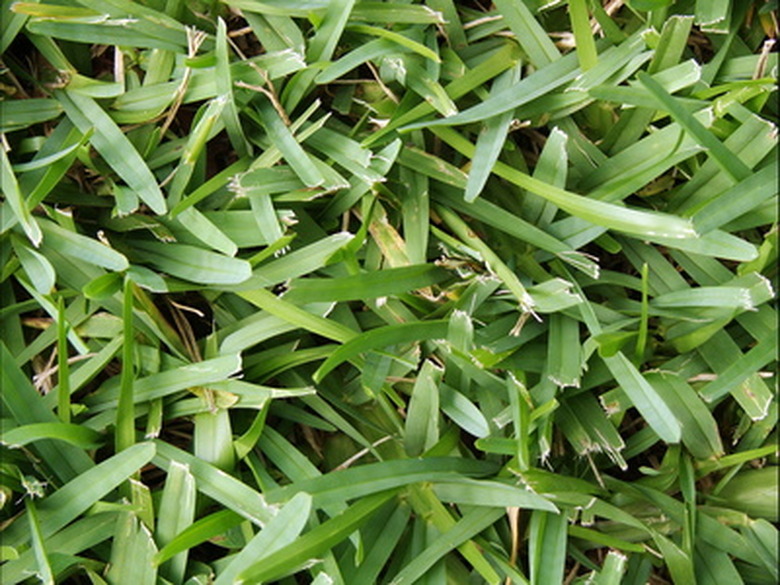How To Sprig St. Augustine Grass
Sprigging is one of the fastest ways to expand a St. Augustine lawn. Planting sprigs, also called stolons, is also a cheaper alternative to laying St. Augustine sod. St. Augustine naturally spreads through runners, so you can take advantage of this to plant a new lawn or fill in bare spots in an existing lawn. Though a sprigged lawn takes longer to establish full coverage than a sodded lawn, you'll have a complete lawn much more quickly with sprigging than with planting grass from seed.
Step 1
Separate the St. Augustine sod by hand or with a knife into individual sprigs, each with a few roots; 1 square yard of sod will yield about 500 sprigs.
Step 2
Insert the blade of the spade into the ground at a 45-degree angle and approximately 2 inches deep. Remove the spade without turning over the soil.
- Sprigging is one of the fastest ways to expand a St. Augustine lawn.
- Separate the St. Augustine sod by hand or with a knife into individual sprigs, each with a few roots; 1 square yard of sod will yield about 500 sprigs.
Step 3
Slip the root end of the sprig into the slit made by the spade. Leave the other end of the sprig sticking out of the ground.
Step 4
Step on the ground above the sprig, sealing the slit.
Step 5
Water the newly planted area when all of the sprigs are planted. Provide about 1/2 inch of water daily during periods of no rain until new growth appears on the sprigs. Apply 1 inch of water twice a week thereafter.
Information On St. Augustine Grass Seed
St. Augustine grass seed is well adapted to a wide range of soils types. With dark green blades and rounded tips, St. Augustine grass grows best in sun but tolerates shade. Varieties include "Amerishade," "Bitterblue," "Classic," "Delmar," "Delta Shade," "Floralawn," "Floratam," "Floratine," "Palmetto," "Raleigh" and "Seville." St. Augustine varieties tend to be more labor intensive than fescue and other common grasses, but they do much better when grown in the appropriate climate zone. You may have to apply pesticides if you find insect infestations. Starting a lawn with St. Augustine grass seed requires the same preparation as any other lawn seed. Water newly seeded lawns several times a day for short periods for at least a week to help the seed take root. After your lawn is established mow it once a week during the warm season and as needed when the lawn is dormant. Standard height varieties, as designated on the package of grass seed, should be kept at 3 1/2 to 4 inches tall.
- Slip the root end of the sprig into the slit made by the spade.
- Provide about 1/2 inch of water daily during periods of no rain until new growth appears on the sprigs.
Things Needed
- Shovel
- Sharp knife
- Sharp spade
Tip
Oregon State University recommends planting sprigs 10 to 20 inches apart for best coverage. The University of Georgia recommends 6- to 8-inch spacing. Closer spacing means faster time to full coverage.
References
- Oregon State University: Louisiana Lawns
- U.S. Department of Agriculture: Plants Profile; Stenotaphrum Secundatum (Walter) Kuntze St. Augustine Grass
- American-Lawns.com: Floratam St. Augustine Lawn Grass
- American-Lawns.com: Palmetto St. Augustine Grass
- American-Lawns.com: Bitterblue St. Augustine Grass
- Hancock Seed Company: St. Augustine Lawn Grass Repair or Replacement; Are You Suffering from St. Augustine Lawn Problems?
